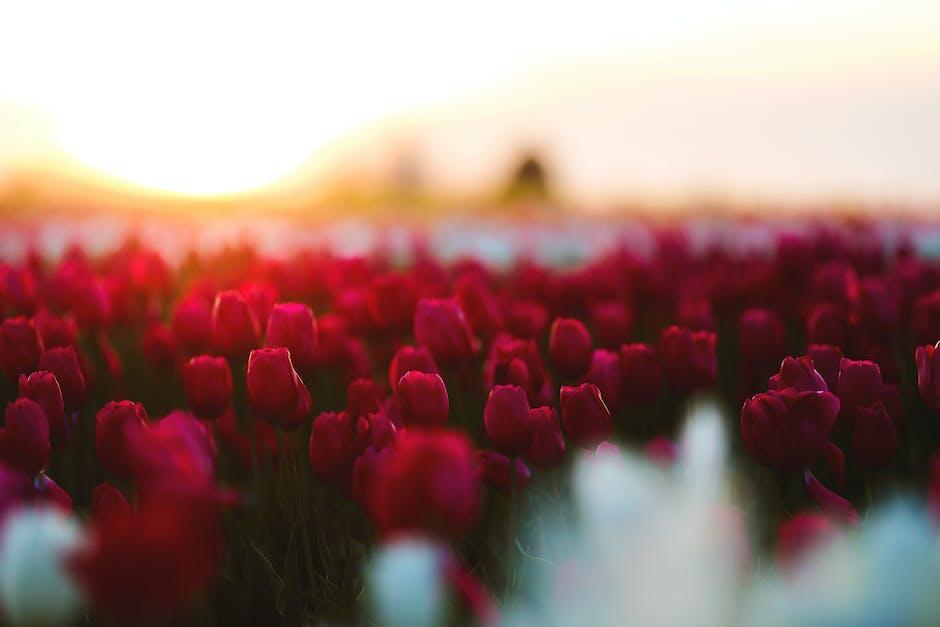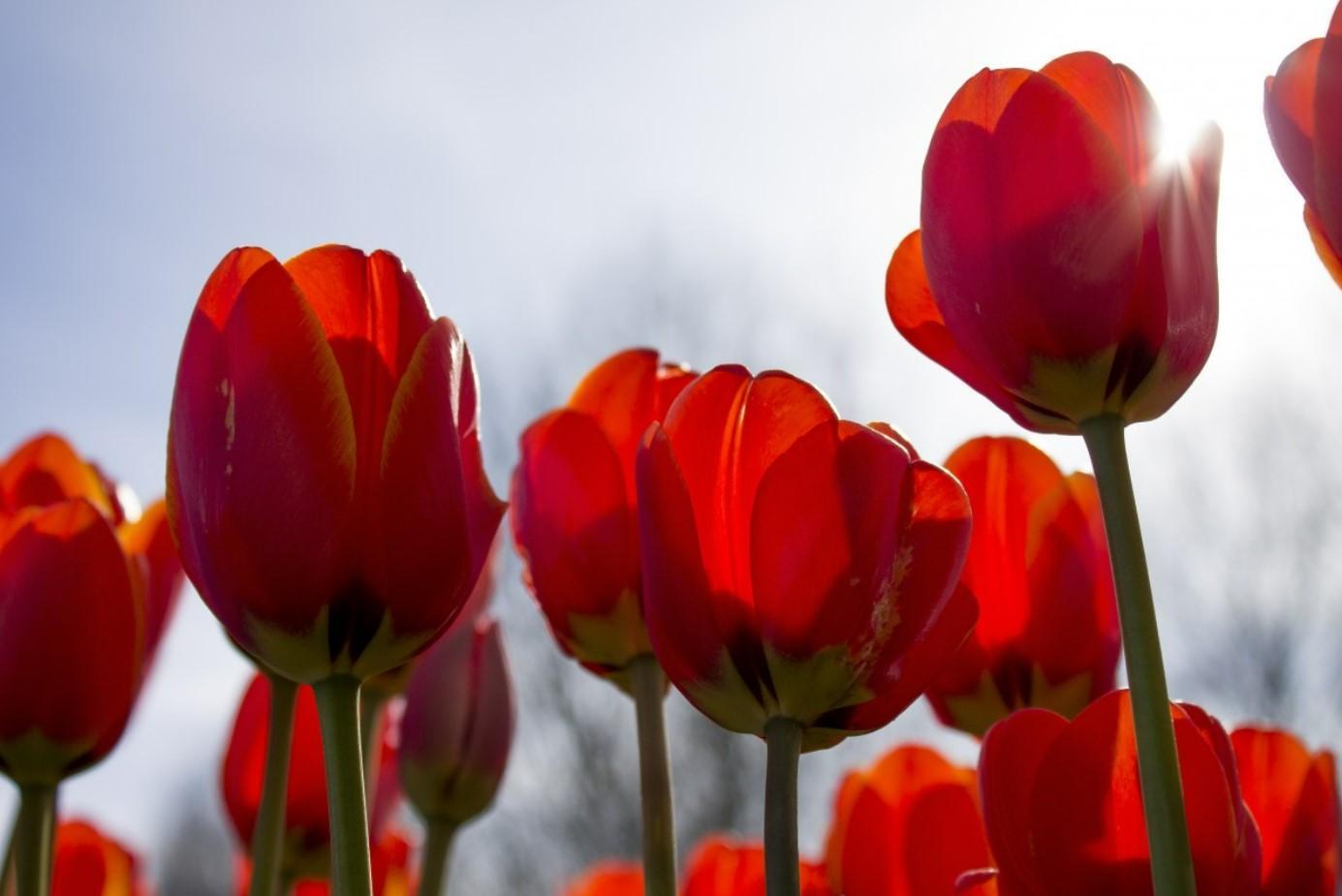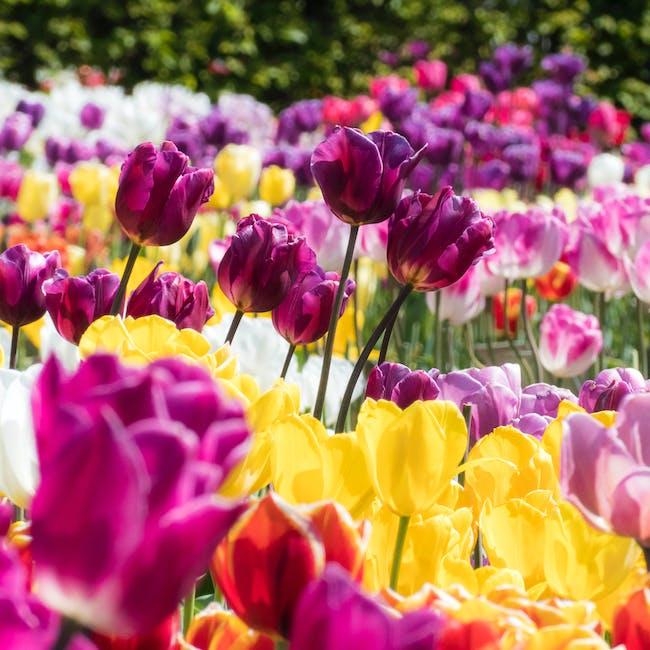What Do Red Tulips Symbolize?


Once cherished by Ottoman sultans, tulips mesmerized Europe with their enchanting beauty and vivid hues. Beyond their captivating visual appeal, these delicate blossoms carry a rich tapestry of symbolism. Symbolizing love in its myriad forms, from the gentle flicker of new romance to the profound depths of unwavering devotion, tulips weave a narrative of emotion. Amidst this spectrum, one hue shines with unparalleled intensity: red, the language of unbridled desire and a love that engulfs the heart.
In the next thedailyECO article, we'll explore the history and symbolism of tulips, culminating in a focused exploration of the iconic red tulip.
History of red tulips
The story begins in the Central Asian steppes, where wild tulips thrived in vibrant colors. Nomadic communities valued these blossoms for their beauty and resilience in tough conditions.
Around the 10th century, the Ottoman Empire embraced tulips. Sultans cultivated gardens with these flowers, particularly favoring red tulips as symbols of love and power.
By the 16th century, tulips fascinated Europe. Ambassadors and traders introduced them, sparking trade. The Netherlands became a hub for cultivating diverse tulip varieties, leading to the tulip mania in the 17th century.
Why did the Dutch go crazy for tulips?
Imagine a flower so coveted, its price could surpass the cost of a house. This wasn't fantasy, but the very real frenzy of Dutch tulip mania in the 17th century.
These exotic blooms, especially the fiery red varieties, became objects of insatiable desire, their value inflating to unimaginable heights. Houses, livestock, even life savings were exchanged for single bulbs, plunging the Netherlands into a speculative bubble as intoxicating as the fragrance of the tulips themselves.
But what ignited this floral frenzy? Several factors combined to create the perfect storm. The Netherlands, at the peak of its Golden Age, brimmed with newfound wealth and a burgeoning fascination with horticulture. Exotic bulbs, like tulips, arrived from the Ottoman Empire, their vibrant colors and delicate forms fueling a collector's craze. Skilled breeders cultivated increasingly rare varieties, particularly the coveted "Semper Augustus" with its deep crimson stripes, pushing prices even higher.
Fueled by speculation and fueled by greed, the market for tulips became detached from reality. Bulb contracts were traded on makeshift "tulip exchanges," prices fluctuating wildly from day to day. Fortunes were made and lost overnight, fueling a feverish atmosphere that gripped the entire nation.
However, like all bubbles, tulip mania couldn't sustain itself. In 1637, the market collapsed, leaving a trail of financial ruin and disillusionment.
And yet, the legacy of tulip mania wasn't entirely negative. It left a permanent mark on Dutch culture, solidifying the association of red tulips with luxury, exclusivity, and fleeting beauty.

What is the meaning of red tulips?
Red tulips, historically emblematic of love and passion, have roots in various cultural contexts. In literature and art, they symbolize the intense emotions of romantic relationships.
During the Victorian era, red tulips gained significance in the language of flowers, representing unspoken desires and ardent expressions. A single red tulip in a letter conveyed nuanced feelings, making them potent symbols of attraction.
In Turkey, where the tulip's journey began, these blooms continue to hold a special place in expressions of love. Single red tulips adorn engagement rings, signifying a passionate commitment that burns bright.
Across India, red tulips are exchanged during Holi, the vibrant festival of colors, symbolizing the renewal of love and the unbridled joy of shared memories.
In Mexico, fiery red tulips find their place in Dia de Muertos (Day of the Dead) celebrations, signifying love and remembrance for cherished souls.
Finally, while roses are the traditional symbol of love, red tulips offer a nuanced and passionate alternative. Their popularity on Valentine's Day has grown due to their vibrant color and elegant appearance, making them meaningful and sophisticated gifts that express deep emotions.
How long do red tulips live?
Typically, tulips in a vase endure for approximately five days. To maximize their lifespan, follow these tips:
- Trim the tulip stems at an angle with a sharp knife or scissors. This helps the flowers absorb water more effectively.
- Use clean and cool water in the vase. Change the water every two days to prevent bacterial growth, which can reduce the tulips' lifespan.
- Remove any foliage that would be submerged in the water, as it can decay and contaminate the water. This keeps the water clean and extends the life of the tulips.
- Tulips last longer in cool environments. Place the vase in a cool spot away from direct sunlight and heat sources.
- While tulips need light, direct sunlight can cause them to wilt prematurely. Place them in a well-lit room, but away from harsh sunlight.
- Tulip food packets, available with flower arrangements or at florist shops, can extend the life of tulips. If unavailable, you can use a homemade solution of sugar and a few drops of bleach in the water.
- Do not place tulips near fruits, as fruits emit ethylene gas, which accelerates the aging process of flowers.
By following these simple tips, you can ensure your tulips stay fresh and vibrant in a vase for an extended period.
Did you know tulips can attract hummingbirds to your garden? Find out about other plants with similar charm in our article.

What do different color tulips mean?
We've delved into the rich world of red tulips, where love and devotion shine. Yet, the language of these flowers goes beyond passion. In this colorful garden of meanings, each hue carries a distinct message, painting a diverse emotional portrait with blooms as varied as a rainbow. Let us take a closer look at what each color mean:
- Pink: softer but still significant, pink tulips paint a picture of tenderness, caring, and appreciation. They symbolize gentle love, budding romance, and heartfelt wishes of happiness.
- Yellow: radiant and cheerful, yellow tulips bring sunshine to any occasion. They signify joy, friendship, and good luck. A bouquet of yellow tulips is a perfect way to brighten someone's day or express optimism and warmth.
- White: representing purity, innocence, and new beginnings, white tulips are often associated with weddings, baptisms, and fresh starts. They convey elegance, sincerity, and a peaceful, hopeful message.
- Purple: majesty and luxury take center stage with purple tulips. They symbolize royalty, wealth, and ambition. A single purple tulip adds a touch of regality, while a bouquet can express admiration and respect.
- Orange: combining the vibrancy of yellow with the intensity of red, orange tulips radiate enthusiasm and creativity. They represent encouragement, confidence, and a zest for life.
- Black: don't be fooled by their dark attire! Black tulips hold a surprising message of power, elegance, and mystery. They can also symbolize strength, resilience, and overcoming challenges.
- Multicolored: when different colors dance together in a single bloom, the message becomes multifaceted. Consider the combination: red and yellow can express passionate friendship, while purple and white might embody wisdom and purity.
Remember, symbolism is fluid and open to interpretation. The specific meaning can be influenced by personal experiences, cultural contexts, and even the occasion. Let your intuition guide you, and don't be afraid to add your own creative twist to the message carried by these colorful blooms.
Before you go, do not miss this other article, where we explain how to care for potted tulips.

If you want to read similar articles to What Do Red Tulips Symbolize?, we recommend you visit our Decorative plants category.








